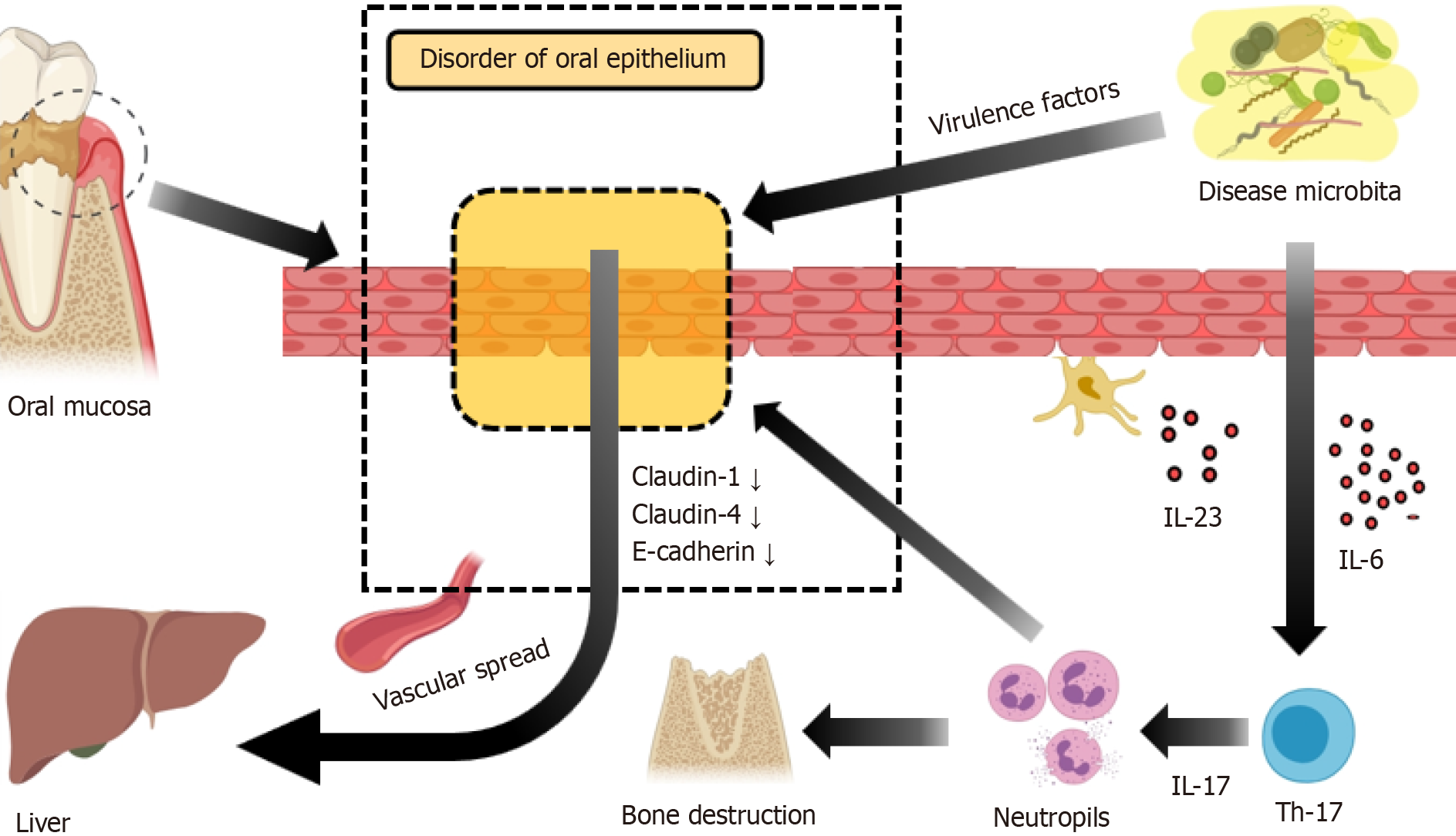Copyright
©The Author(s) 2024.
World J Hepatol. May 27, 2024; 16(5): 688-702
Published online May 27, 2024. doi: 10.4254/wjh.v16.i5.688
Published online May 27, 2024. doi: 10.4254/wjh.v16.i5.688
Figure 2 Disruption of oral mucosal barriers by pathogenic microorganisms.
Pathogenic microorganisms enhance Th17 cell secretion of interleukin (IL)-17 through stimulating factors, including IL-6 and IL-23, which leads to neutrophil aggregation and activation. Concurrently, oral epithelial cells reduce the expression of Claudin-1, Claudin-4, and E-cadherin, thereby increasing barrier permeability. This alteration elevates the risk of pathogenic microorganisms entering the bloodstream and reaching the liver. IL: Interleukin.
- Citation: Mei EH, Yao C, Chen YN, Nan SX, Qi SC. Multifunctional role of oral bacteria in the progression of non-alcoholic fatty liver disease. World J Hepatol 2024; 16(5): 688-702
- URL: https://www.wjgnet.com/1948-5182/full/v16/i5/688.htm
- DOI: https://dx.doi.org/10.4254/wjh.v16.i5.688









